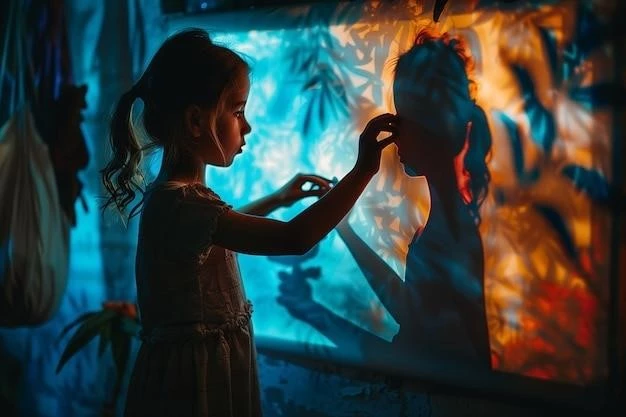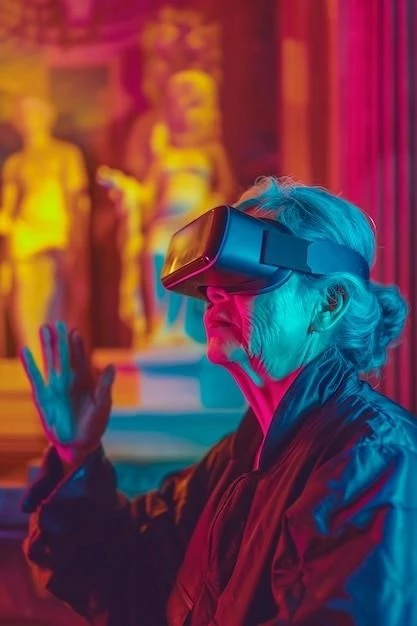I’ve always been fascinated by art’s ability to transcend boundaries. As a child, I found solace in sketching fantastical worlds, and later, photography became my tool to capture the raw beauty of everyday life. But it wasn’t until I delved into the realm of digital art that I truly grasped its transformative power, not just for artists, but for society as a whole.
A Digital Canvas: Limitless Potential
My journey into digital art began with simple graphic design software. I was amazed by the precision and control it offered, a stark contrast to the forgiving nature of charcoal and paint. It opened up a new dimension of creativity, allowing me to layer textures, manipulate colors, and experiment with effects that would be impossible to achieve traditionally.
But digital art is much more than just a set of tools. It’s a medium that constantly pushes the boundaries of what’s possible. I was particularly drawn to the world of 3D modeling٫ where I could sculpt virtual forms with an architect’s precision and a sculptor’s touch. It felt like stepping into a limitless playground where imagination reigned supreme.

Democratizing Creativity: A Global Stage
One of the most remarkable aspects of the digital age is the democratization of art. In the past, aspiring artists often faced significant barriers to entry, from the cost of materials to the need for formal training. Today, all you need is a computer and an internet connection to access a wealth of resources, from free software to online tutorials.
This accessibility has led to an explosion of creativity, with artists from all walks of life sharing their work on platforms like Instagram, DeviantArt, and Behance. I’ve discovered countless talented individuals online, each with their unique style and perspective. It’s a vibrant and diverse community, fostering collaboration and pushing the boundaries of artistic expression.
Breaking Down Barriers: Art Without Limits
Digital art isn’t just about creating stunning visuals; it’s about breaking down barriers and challenging traditional notions of what art can be. I’ve witnessed firsthand how technology can empower artists with disabilities, providing them with new tools and platforms to express themselves.
For instance, I recently attended an exhibition featuring works created using eye-tracking software, allowing individuals with limited mobility to paint with their gaze. It was a powerful testament to the human spirit’s ability to overcome adversity through art, and a reminder that creativity knows no bounds.

Blurring the Lines: Art and Technology Converge
The line between art and technology is becoming increasingly blurred, and I find this convergence incredibly exciting. Interactive installations, virtual reality experiences, and even artificial intelligence-generated art are pushing the boundaries of artistic expression, blurring the lines between creator and audience;
I recently had the opportunity to experience an immersive VR art installation that transported me to a surreal underwater world. It was an unforgettable experience that transcended the limitations of traditional art forms, engaging my senses and emotions on a visceral level.
The Power of Connection: Building Bridges Through Art
In an increasingly digital world, art plays a vital role in fostering connection and understanding. Through social media, I’ve connected with artists and art enthusiasts from around the globe, sharing ideas, inspiration, and a mutual love for creativity.
Digital art has the power to transcend cultural and linguistic barriers, creating a universal language that resonates with people from all walks of life. It’s a powerful tool for promoting empathy, sparking dialogue, and fostering a sense of shared humanity.
Challenges and Opportunities: Navigating the Digital Landscape
While the digital age presents incredible opportunities for artists, it also comes with its own set of challenges. Issues like copyright infringement, digital preservation, and the environmental impact of technology are important considerations for artists working in the digital realm.
Moreover, the constant influx of new technologies and platforms can be overwhelming, requiring artists to adapt quickly and stay ahead of the curve. However, I believe that these challenges also present opportunities for innovation and growth, pushing artists to explore new creative avenues and redefine the very nature of art in the 21st century.
The Future of Art: A Digital Renaissance?
As we continue to venture further into the digital age, I’m filled with a sense of optimism about the future of art. Technology has empowered a new generation of artists, democratizing creativity and breaking down barriers like never before. The lines between art forms are blurring, leading to exciting new hybrids and collaborations.
While it’s impossible to predict exactly what the future holds, I believe that we are on the cusp of a digital renaissance, a period of unprecedented artistic innovation and expression. And I, for one, am incredibly excited to be a part of it.










